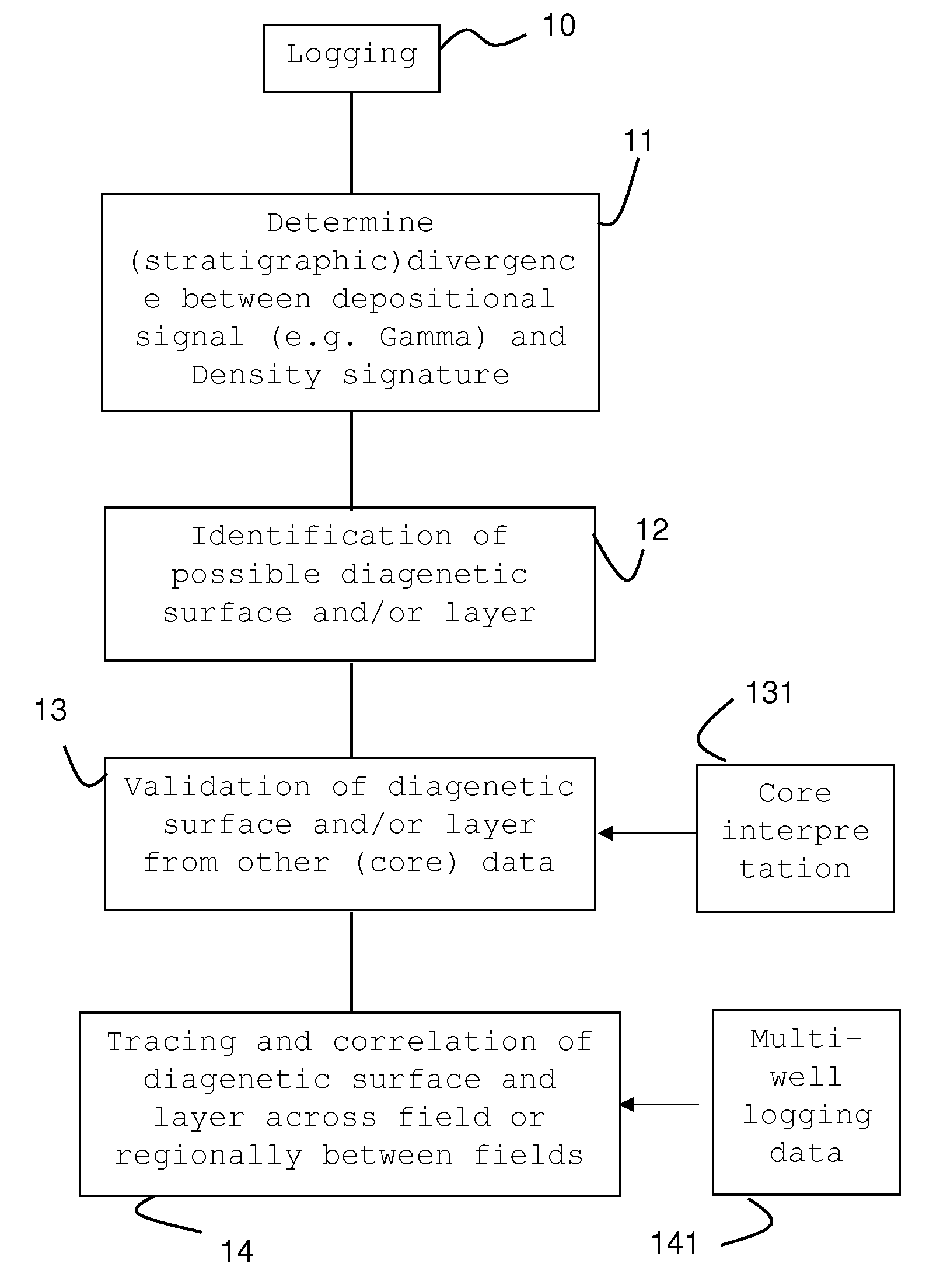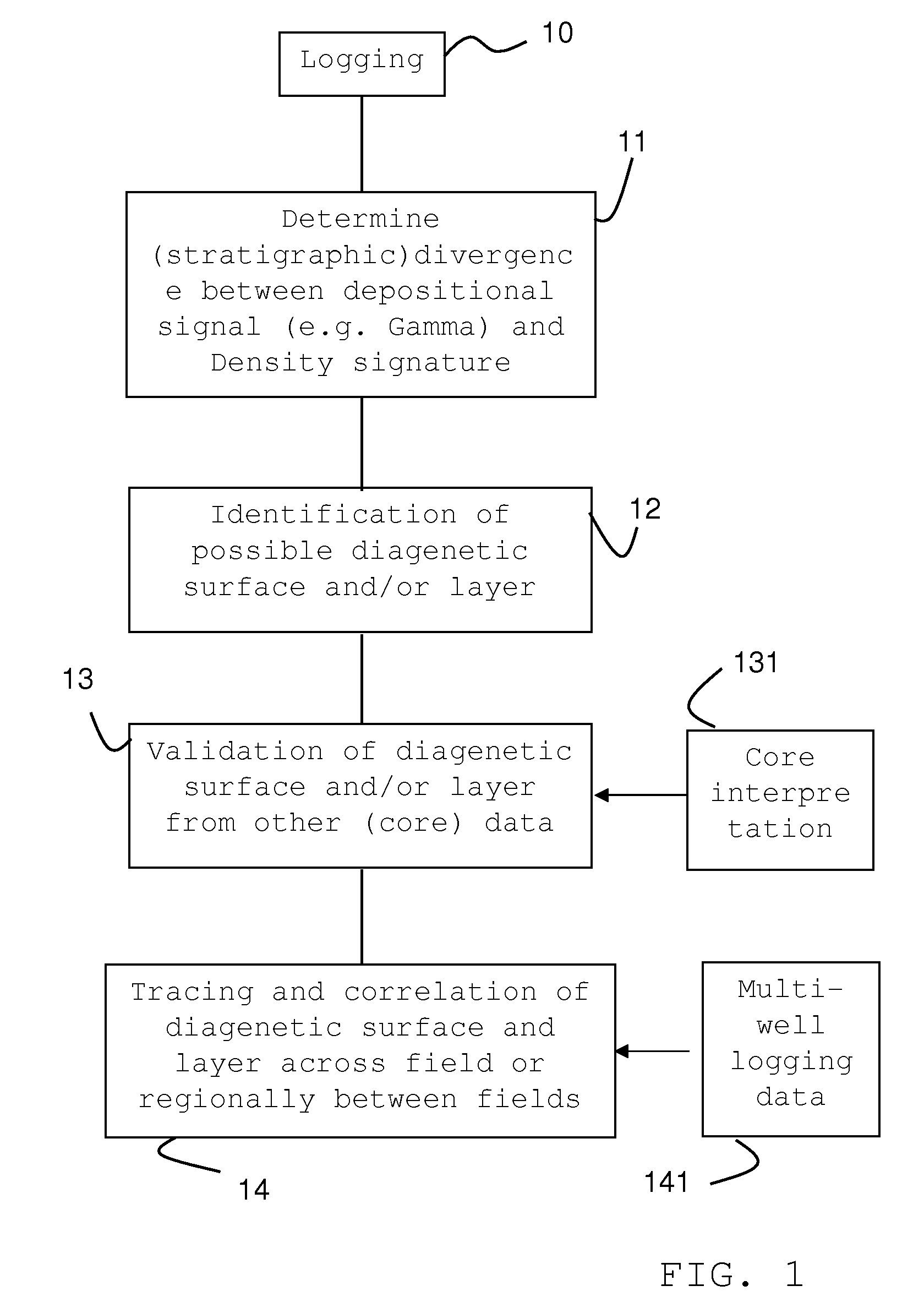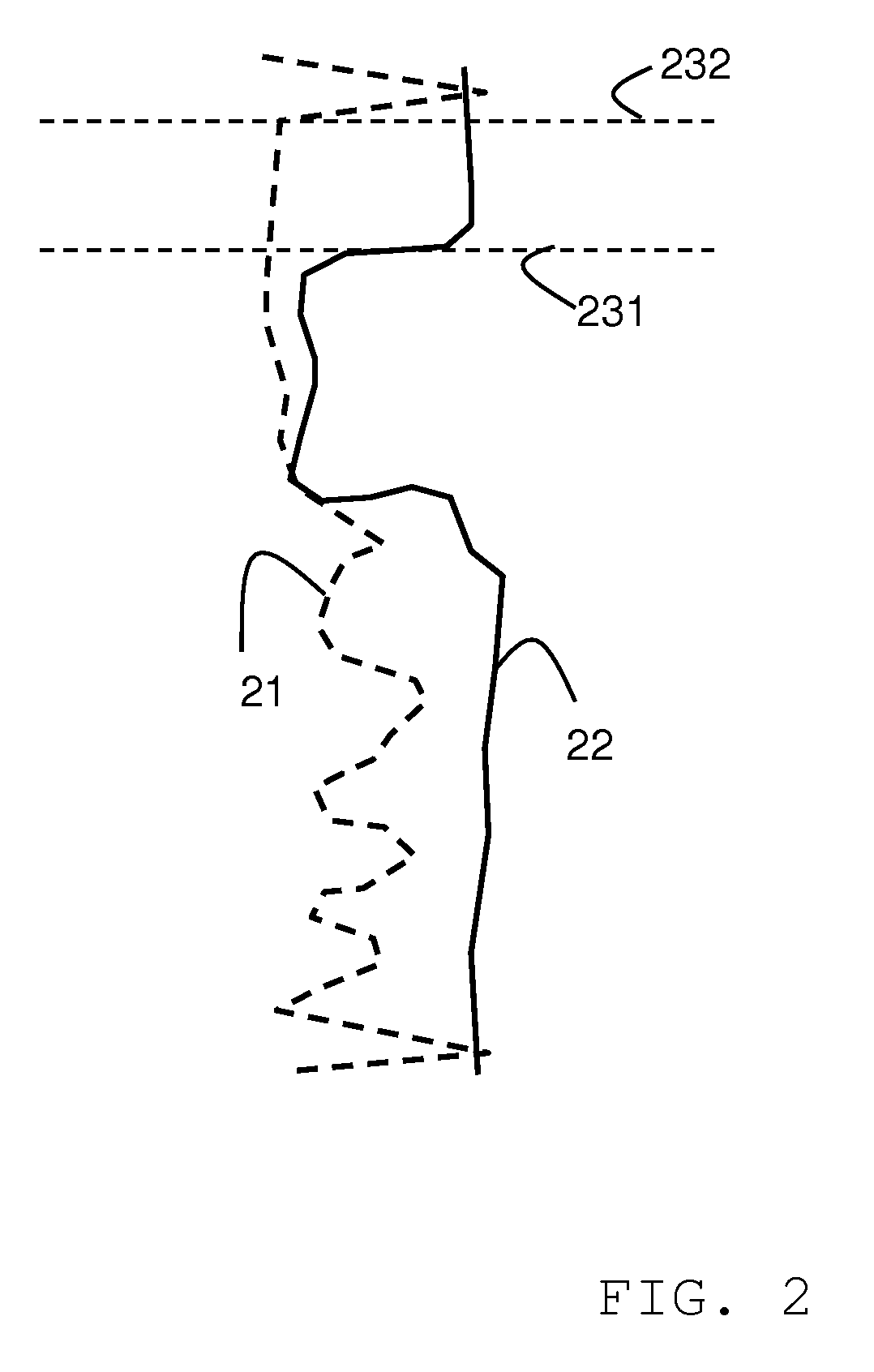Method of interpreting well data
a well data and data technology, applied in the field of well data interpretation, can solve the problems of complex structure, difficult to predict hydrocarbon production efficiency, etc., and achieve the effect of reasonable predictability
- Summary
- Abstract
- Description
- Claims
- Application Information
AI Technical Summary
Benefits of technology
Problems solved by technology
Method used
Image
Examples
Embodiment Construction
[0040]Each stage of the invention is now described in more detail.
[0041]After a logging operation which may be performed using known wireline tools or logging-while-drilling (LWD) tools (step 10 of FIG. 1), a plurality of log signatures of the well are recorded. The logging and following interpretation according to the invention can be conducted on vertical, horizontal, or deviated wells. For the present example a gamma ray and a density log are measured and recorded.
[0042]The invention includes the step 11 of detecting any stratigraphic divergence between any given log signal known to be influenced mainly by depositional lithology like gamma ray logs and logging signal which can be influenced by diagenetic processes in the formation like the density logs.
[0043]In FIG. 2 there are shown a set of two wireline signatures in a deviated well through the Thamama Formation in the United Arabian Emirates.: The gamma ray log signature 21 is shown as dashed line and the density log 22 as sol...
PUM
 Login to View More
Login to View More Abstract
Description
Claims
Application Information
 Login to View More
Login to View More - R&D
- Intellectual Property
- Life Sciences
- Materials
- Tech Scout
- Unparalleled Data Quality
- Higher Quality Content
- 60% Fewer Hallucinations
Browse by: Latest US Patents, China's latest patents, Technical Efficacy Thesaurus, Application Domain, Technology Topic, Popular Technical Reports.
© 2025 PatSnap. All rights reserved.Legal|Privacy policy|Modern Slavery Act Transparency Statement|Sitemap|About US| Contact US: help@patsnap.com



